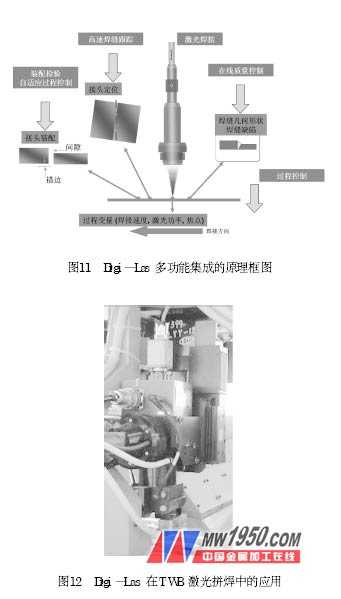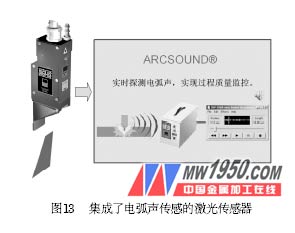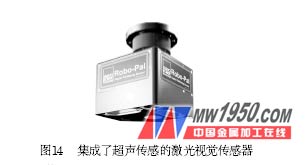5. Multi-layer welding function The multi-layer welding function of laser vision sensing is specially developed for the needs of weld seam tracking and adaptive parameter adjustment of large and thick multi-layer welding. According to different parameter settings, the laser sensor can identify the contour image of the root bead and subsequent bead welds, obtain the tracking point of the weld, and plan the welding parameters of each bead according to the section of the weld bevel. The multi-layer welding function can be used for both welding machines and robot welding. However, because the robots of different manufacturers support different layers of multi-pass welding functions, only a part of the robots can be used with the multi-layer welding function of laser vision sensing. Figure 10 is a photograph of a robotic adaptive multilayer weld of a bulldozer component using an M-SPOT laser vision sensor. 6. Integration The integration of laser vision sensing is reflected in three aspects: multi-functional integration, integration of different sensing methods and integration of sensors and controllers. (1) The versatile integrated Digi-Las system is a typical example of multi-functional integration. As shown in Figure 11, the system integrates six functions of pre-weld joint assembly inspection, high-speed weld tracking, laser welding head, adaptive process parameter control, laser weld pool monitoring, and post-weld weld quality inspection. Digi—Las uses two laser vision sensors in tandem, with a laser-welded focusing device and a CCD that monitors the weld pool. The front laser stripe is used to detect and record parameters such as misaligned edges, gaps, and joint locations that reflect assembly quality, and achieves high-speed weld tracking and adaptive adjustment of laser welding process parameters. The rear laser stripe is used to detect and record weld geometry and weld defects. Figure 12 is a photograph of a Digi-Las laser welded joint used in automotive TTW laser tailor welding. (2) Integration of different sensing methods Digi-I/S as shown in Figure 13 The sensor integrates an arc sound sensor based on laser vision sensing. The sensor has the function of weld tracking and adaptive welding parameter control with laser vision sensing, and can also detect the sound from the arc for process quality monitoring such as MIG/MAG welding short circuit transition. The Robo-Pal sensor shown in Figure 14 integrates an ultrasonic sensor for long-range position detection. There are two criss-crossed laser vision sensors for precise positioning of the target object. This type of sensor is mainly used for machine handling, loading and unloading, etc. Previous Next White Sticky Goose Down,Textile Raw Materials,Goose Down Water Treatment Chemical Co., Ltd. , http://www.nsadditive.com

